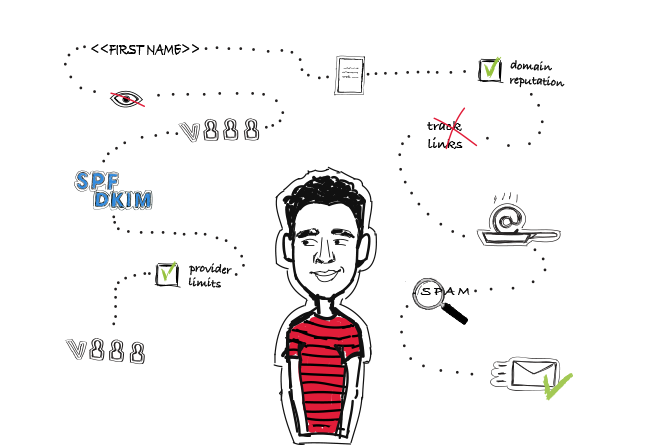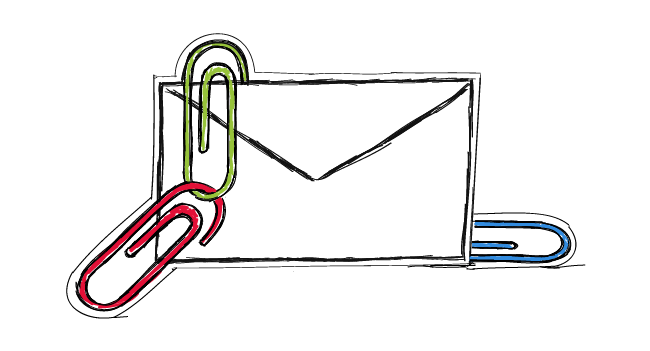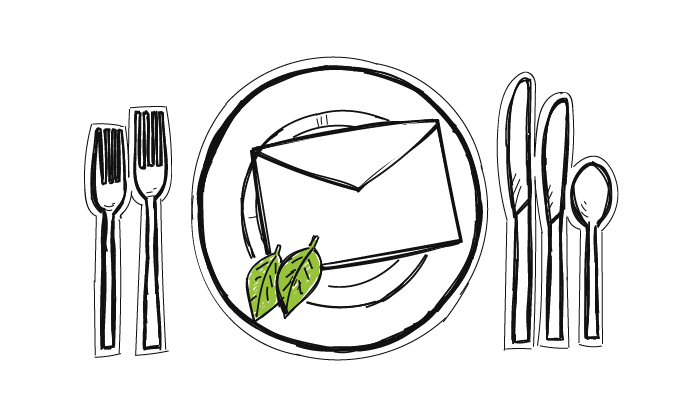Although for many of us writing an email comes without much difficulty, it may be beneficial to stop, review what we’ve written and thought how others may perceive it. As we’ll see in this post, we may commit a blunder without even knowing.
Gloria Kopp authored a blog post for us about typical email faux-pas.
Let’s dive into it.
***
Emailing is one of the most popular lead generations used by businesses today. In fact, more than 63% of B2B businesses claim it’s their most effective form of generating revenue. It’s also extremely cost-effective.
However, sending out potentially thousands of emails to potential customers is a risky business, especially if something in that email is wrong and your prospects have spotted it.
Seven email etiquette mistakes that happen a lot
To help you ensure perfection, here are seven of the most common mistakes that you need to be aware of.
Lack of personality
One of the biggest disadvantages that cold emails have is the fact that they’re cold emails. Let’s face it; they have a bad reputation. That is, sending a generic, tone-deaf, and quite frankly, boring, email is not going to do you any favours. It will simply reinforce the image that cold emails are bad.
Use your name in the from line of your emails, rather than a generic email address like [email protected], and you’ll see a huge return in replies. Likewise, be sure your name used in your email matches the one in your email address.
What to put in the “from:” line of cold email >>
Unclear subject line
If someone is reading your email and they have to look around to see what you actually want, you’ve pretty much lost your customer. Instead, be very clear about the intentions of your email and why your reader should be interested in it, and what they will personally get out of it.
What subject line will make my addressee open my cold email >>
Bombarding your leads
It’s easy to think that your business has a lot to say, and you’re bound to find yourself so excited to share this with all your leads. However, bombarding your leads with emails is only going to lead them to unsubscribe, and thus, you’ve lost your chance.
Instead, research which times will best suit your clients in terms of replying, so you’re not forced to attempt to follow up with them constantly.
Adding URLs instead of hyperlinks
If you’re simply typing in or copying URL links into your emails, it looks too messy and so unprofessional, and as a result, it’s going to push away your potential buyers.
Remember that all email clients accept hyperlinking, so use it as opposed to URLs for cleaner and easier to read emails.
Attaching read receipts
For you as an email sender, read receipts can be great because you can see exactly who’s opened your emails, so you can target your content marketing strategy properly. However, consider the impact it has on your customer’s experience.
“Read receipts are incredibly annoying and maybe even a little stalker-ish to some leads. It doesn’t represent trust in your clients or leads and will make you look unprofessional” – explains Claudia Steel, an Email Marketer at Big Assignments.
Poorly optimized attachments
If you’ve ever had to open an attachment and then search all through Google on how to open the file itself and download programs to open them, you’ll already know how long-winded a process that is. Your leads will not have that kind of time and patience to play with it, so they won’t bother reading them, let alone opening them up.
Instead, make sure that any attachments you send are in common and popular formats that can be opened by everywhere.
Not paying attention to attachments
Hand in hand with the point above, if you’ve attached something, such as a price sheet or promotion material to your emails, but you haven’t mentioned it within your email, that looks incredibly suspicious, and people won’t open it. It’s also incredibly unprofessional and can potentially destroy any previous relationship you had with the client.
Should we use fonts, picks and attachments? >>
Online tools to help you avoid email etiquette mistakes
There are so many things you need to keep your wits about when it comes to writing cold emails that it can be extremely difficult to remember them all. Here are some of the tools you can use to make sure that you don’t forget them.
An online tool you can use to make sure that you’re using grammar properly in your emails. This will help to improve readability and the professionalism of your emails.
This is a free online tool you can use to track and monitor the word count of your emails. It helps you stick to the point, rather than going on for too long.
3. Boom Essays
You can use this online tool to communicate with professional writers who will guide you through the process of editing your emails to perfection.
4. Cite It In
A free online tool for adding quotes, references and citations to your cold emails in a professional format. This is ideal for adding quotes, testimonials, and references to your emails.
5. Via Writing
An online writing tool and blog that you can use to make sure you’re writing everything properly and in a correct format that’s ready for sending.
6. Essay Roo
This is an online tool you can use to help you proofread your emails before you send them. It can help you perfect the written content of your emails.
7. Resumention
A tool that can create email copywriting on your behalf, especially if you don’t have the time or don’t trust your skills when it comes to writing the content itself.
An online resource that is full of information, posts and services about everything related to grammar and all things writing, perfect for answering any questions you have.
9. UK Writings
A specialist online tool for editing the content of your emails to make sure you’re communicating the message you want to communicate while learning how to do it properly next time.
Final words
Sending cold emails doesn’t have to seem like an illegitimate way of attracting customers. If done the right way, it can be extremely professional and extremely lucrative for your business. Just make sure you avoid the mistakes mentioned above at all costs.
After considering those tips, start writing your outbound messages. Here’s some advice
READ ALSO

5 Cold Email Writing Services to Use, and When You Need Their Help
Cold email writing is a skill and like any other skill, you need to hone it before you can call yourself an expert. But what if you cannot devote enough time to master that skill? What to do then? You can search for ready-made email templates in Google, and use the one you like. Yet, it's a risky maneuver. Your prospect may have already received the exact email template from somebody else. I wrote some time ago that it's not a good solution. Fortunately for you, there is yet another option - using one of the services that specialize in cold email writing. Such a service can cost a bit, but there are two scenarios when a cold email writing service is a godsend.

14 Deliverability Checks to Carry Out Before Sending Your Cold Email Campaign
You can have control over your cold email deliverability. In outbound outreach, it's crucial how many of the emails you sent actually get to your prospects' inboxes. There are at least 14 points on a deliverability checklist that you can, and should, go through before you start off your email campaign. I've listed them below in three categories. Some of them you may already know of, but some may be new for you. Check the list and see if you're doing everything you can to ensure that your cold emails actually get to their destination.

Attachments in Cold Email: Should We Ever Use Them?
Lately, we got some questions from our users about attachments in cold email. I understand that many sales people got used to sending emails including attachments. But when it comes to cold email campaigns, attaching files to the messages may actually make you look less reliable as an email sender, and thus cause some serious deliverability problems. I decided to write this post to show you some reasons why using attachments in cold email may not be the best idea. I also present here some alternative ways of sharing content with your prospects.

